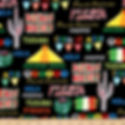- Melissa
- Mar 19, 2020
Updated: Mar 20, 2020
I mean, who wouldn't join that movement?
Ok, so my anxiety has been through the roof lately and when I'm anxious...I create. Not a terrible thing. But I've put in a garden, made planter boxes, finished multiple quilts, and painted my bedroom. All these things are great for me, but in this time of global crisis, I really want to spend what little free time I have (what I can eek out after homeschooling three kids and a special needs toddler) doing something that is contributing to the public good.
So when I started hearing about hospitals in desperation calling for seamstresses to create fabric face masks, I perked up. I mean, first I was skeptical. How do you standardize and create masks that are as good as the medical ones? Short answer I found is you can't. Obviously. So pay attention here: THESE ARE NOT MEDICAL GRADE MASKS. DO NOT WEAR THEM THINKING YOU'LL BE PROTECTED.
But these are desperate times and in desperate times, the CDC guidelines allow fabric masks as "a crisis response option when other supplies have been exhausted." (CDC: Strategies for Optimizing the Supply of Facemasks) And according to hospitals around the country, we are past that point. So if hospitals are asking for them and I can provide, then I will.
Here are a couple of articles you can read with calls for masks, just to give you an idea:
And here's an interesting one about the effectiveness and best materials for cloth masks:
I saw a few links to patterns that are pretty simple. I decided to streamline these patterns, adding the multiple layers that are recommended, including a nonwoven for filtration. You can download that PDF free right below. Share it far and wide, with whomever you'd like. Use it with your friends, your guilds, your church groups (all remotely of course!). Note: This isn't a medical grade face mask. Obviously.
UPDATE: I've received some suggestions from people in the medical community on how to make this pattern more effective- including a moldable nose bridge for sealing and adjustable ties rather than elastic for an individualized fit. I'm tweaking the pattern and the new one is now up!
Get into contact with your local hospitals and clinics to see if they'll accept them and let me know so I can post the address. I like the idea that clinics can use them for worried non-critical patients, freeing up the medical grade masks for doctors and infected patients. Also, if local places aren't taking them yet, here are the addresses of the places mentioned in the articles:
Deaconess Health System
Phoebe Putney Memorial Hospital
417 W 3rd Ave
Albany, GA 31701



